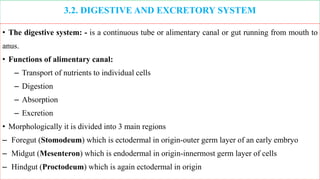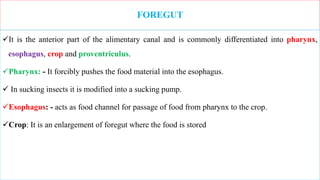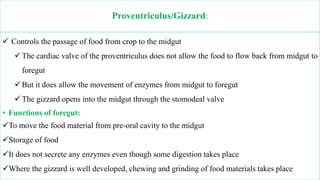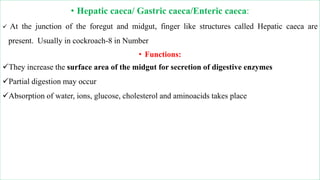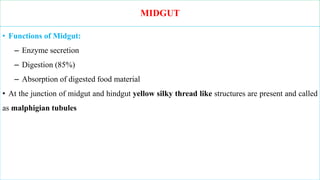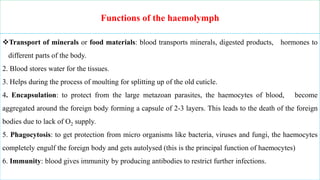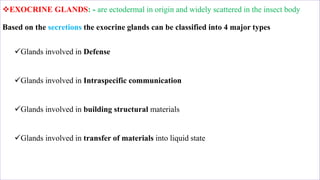The document summarizes the internal structures and functions of the digestive, circulatory, nervous, and endocrine systems of insects. It describes the main regions and roles of the alimentary canal including foregut, midgut and hindgut. It discusses the open circulatory system of insects involving the dorsal blood vessel and heart. Key aspects of the nervous system such as the central, visceral and peripheral nervous systems are outlined. Finally, it distinguishes between exocrine and endocrine glands and provides examples of different gland types.

